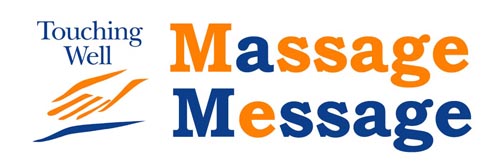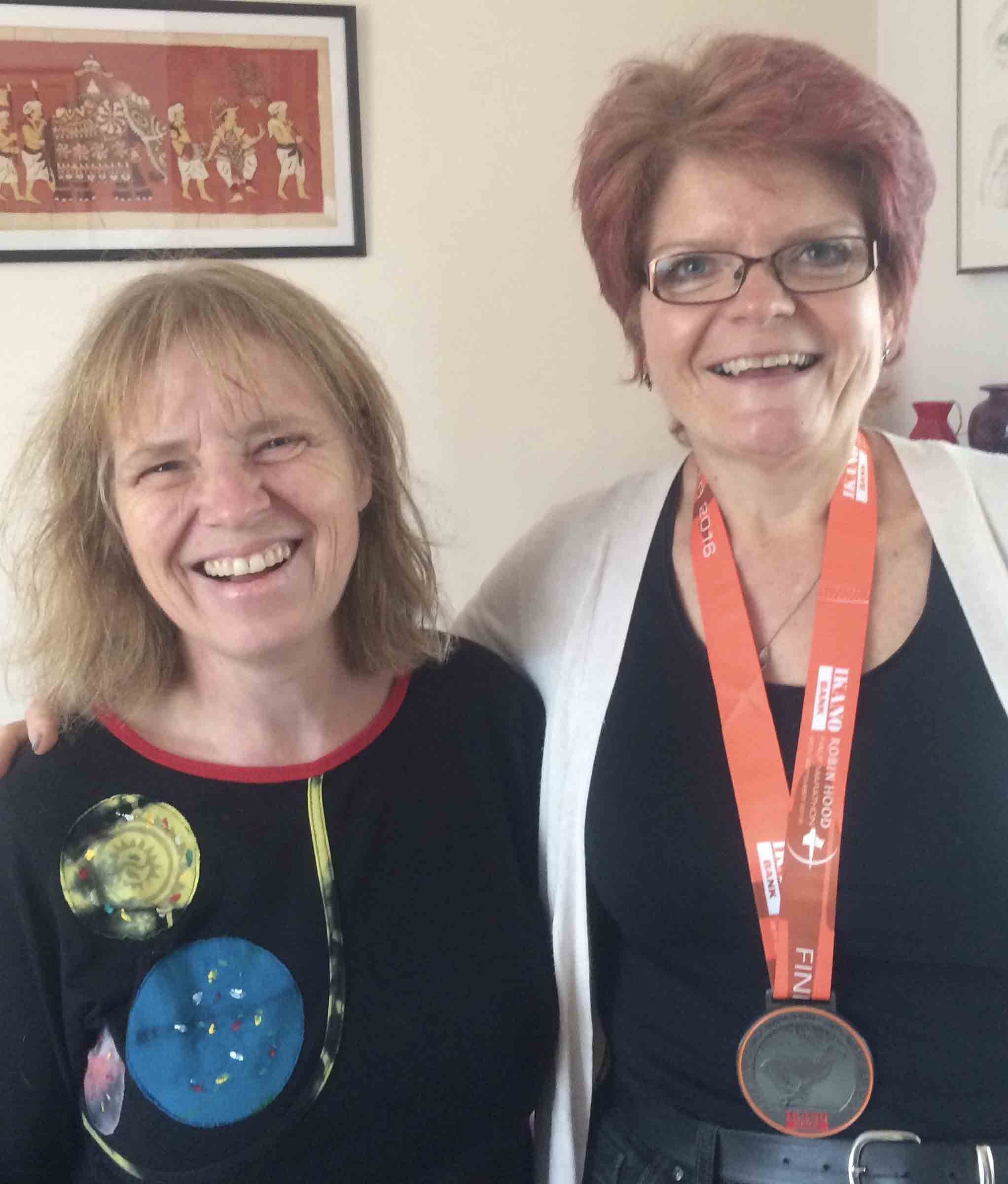| Back to Back Issues Page |
 |
|
Massage Message 25: Myofascial Release, massage during labour, and/or anxity and much more. November 08, 2016 |
online Myofascial release In the last Massage Message I had just returned from intensive training in Myofascial Resease (MFR). I have since been to Master Classes in MFR, deepening techniques we have only touched on (also literally in this case) during the intensive training in May. That way I get my dose of “hippidom” (and sleep deprivation) as these involved a day trips to Brighton. The idea behind MFR is that pain and/or joint restriction is often associated with disturbances in the functioning of our body’s connective tissue, specifically fascia. If we can ease or “release” the fascia, the “problem” should improve. Fascia can be thought of as a web of three dimensional connective tissue which surrounds and supports almost everything in our body - muscles, bones, nerves, organs, ducts, vessels, and glands. Structurally, this web is made up of fibrous tissue of varying density all suspended in ground substance, a mucous-like material. Fascia is very strong. It holds our whole body together and gives it its shape. Bones are used like struts or spacers to maintain a dynamic but balanced system of forces. These forces are provided by muscles (surrounded and separated by fascia), ligaments and tendons (also made of fibrous connective tissue). Without a fascia we would not be able to move. And if fascia is stuck together, our ability to move can affected, sometimes severely. MFR is a bit like adjusting the fitted sheet on your bed. Pull on one corner, and the whole sheet will be affected. I continue to integrate MFR into my massage practice, both for massage and lymphoedema treatment. Some clients love MFR and I mostly use this treatment approach, and others are less keen and prefer massage with oil. I got this message when one client said: “I love it when you put the oil on my back...” As always, we do what is called for at each session.
After just one session of Myofascial Release my lower legs, which have been very tight and painful for over 6 months, are considerably more relaxed and less painful. Thank you Regina, I would not have believed this treatment could be so effective so quickly.
Reaching my goal
“I started having massage again with Regina just over two years ago as I embarked on a journey to loose weight and improve my fitness. Regina has been with me each step of the way and I am very pleased to say that I successfully completed the Ikano Robin Hood Half Marathon on the 25th September! Over the last 2 years I've lost over 4 stone and obviously got a lot fitter. Regina has helped me to love my body (whatever it's size) and she has always provided lots of encouragement and support as well as very helpful and therapeutic massage. Regina is a very intuitive therapist, whether you need a pick me up, or time to relax or help with some painful muscles, she always adapts what she does to your needs on the day. I always look forward to my time on the table and I honestly don't think I could have achieved what I have without her help.” Hazel, Beeston, Nottingham.
Massage during labour shortens it. Massage has been used in childbirth for Millennia. It can decrease (labour) pain by reducing adrenaline and noradrenaline (stress hormones) and increasing endorphins. Massage can also increase oxytocin, which in turn increases contractions and thus potentially shortens the duration of the birth. The following study set out to investigate whether massage during labour indeed shortens labour. They compared 50 women receiving a pre-specified massage sequence with 50 women who had normal care during labour. Analysis showed that the first and the second stage of labour was, on average, shorter for the women in the massage group. Also, the babies fared better in the massage group, with the Apgar scores at minutes 1 and 5 higher than in the control group. This study showed that massage during labour will indeed lead to shortening of the first and second stage of labour. It improves Apgar scores at the first and fifth minute. By shortening the duration of labour, pregnant women are more likely to to have a more normal vaginal delivery. (J Clin Diagn Res. 2016 Apr;10(4):QC12-5) . Another study compared a number of complementary therapies applied during the birth of their first baby with a similar group of women not using these therapies. Participants were taught number of evidence based complementary therapies (acupressure, visualisation and relaxation, breathing, massage, yoga techniques, and facilitated partner support) in a two day training session. It was found that women in the complementary therapies group were less likely to have an epidural, fewer augmentations (speeding up of labour), lower caesarian birth rate, a shorter second stage of labour and fewer resuscitations of newborns, compared to “standard care”. (BMJ Open. 2016 Jul 12;6(7):e010691) . What an amazing result! And most of these are skills for life! If you can get someone to give you a really slow back massage the day after the birth, then you are less likely to suffer under anxiety for a while after the birth. (Iran Red Crescent Med J. 2016 Jun 7;18(8):e34270) .
MLD normalises skin in oedema Manual lymph drainage (MLD) is one of the major components of the combined physical therapy (CPT) that is used in the treatment of lymphedema. MLD acts as a force on the interstitial (between cells) fluids and proteins inside the initial lymphatics, thereby shifting them towards collaterals (smaller alternative pathways) and/or normally functioning lymphatic vessels. MLD not only softens tissues directly, but possibly also remove excess local fluid. A recent study of MLD looks at changes in the mechanical properties of the skin and subcutaneous tissue. The chosen characteristic is strain, which is defined as “a deformation of a solid due to stress”, thus it is considered a proxy for tissue hardness. This recent study measures tissue strain before and after MLD for people with and without lymphoedema (using free-hand real-time tissue elastography (RTE) – you can look at the original paper for more details). Skin strain measurements were taken at the middle of the inner thigh and calf by RTE in 20 legs with lympheodema of 18 patients (stage II: 11, late stage II: 7, stage III: 2) and in 70 legs of 35 people with normal lymphatics. Measurements were taken before and after MLD. It was found that MLD did not only soften the skin, but the skin appears more “normal” in terms of its mechanical properties. original paper for more details). Skin strain measurements were taken at the middle of the inner thigh and calf by RTE in 20 legs with lympheodema of 18 patients (stage II: 11, late stage II: 7, stage III: 2) and in 70 legs of 35 people with normal lymphatics. Measurements were taken before and after MLD. It was found that MLD did not only soften the skin, but rather normalized it in terms of strain. (Ann Vasc Dis. 16;9(1):30-4) .
Real time lymph flow The effect of MLD on the lymphatic system can be difficult to imagine. Clients and myself can see and feel the result, but the minutia of what happens within the lymphatic system has been left to the imagination. A fairly recently developed (about 4 years ago) technique called “Near-Infrared Fluorescence Lymphatic Imaging”(NIRFLI) has been able to visualise the movement of lymph in lymph vessels, and the effect of MLD has been beautifully demonstrated in this video .
Gemma’s "life-changing" story Having recently been diagnosed with lymphoedema in my leg, I was devastated at the long term prospect of managing this condition. I was recommended to Regina and within one session I felt (as did my partner) educated, reassured and, for the first time in ages, pain free. Her knowledge of this condition surpasses any other health professional I have seen. She has now carried out several MLD (and Deep Oscilation) sessions on my legs. We tried compression bandages for a few weeks, but I struggled with that. I now wear daily full length tights compression, which following MLD with Regina has given me so much more comfort. I have bought a personal Deep Oscilation unit, which I now use myself daily or my partner does it, but I continue to have weekly sessions with Regina. I also go to aqua aerobics at least twice a week. She has also done Myofascial Release on my other leg. Following a fall in the summer, where I broke my ankle and tore the ligaments, I had been in pain at the back of my knee and calf. She has done several sessions on this and my leg is improving every time. I can highly recommend Touching Well, Regina has changed not only my condition but also my perspective on how I can cope with it and manage it daily myself. If you are in pain or struggling to come to terms with how you can manage a condition like lymphoedema, then please talk to Regina. She is very professional, her attention to detail is impressive, a great character which puts you instantly at ease.
With the Christmas season coming up, remember that you can give an experience as a Christmas present - a gift voucher. I look forward to seeing you. With warm regards, Regina
Issue 25 of the Massage Message: 9th November 2016.
|
| Back to Back Issues Page |
